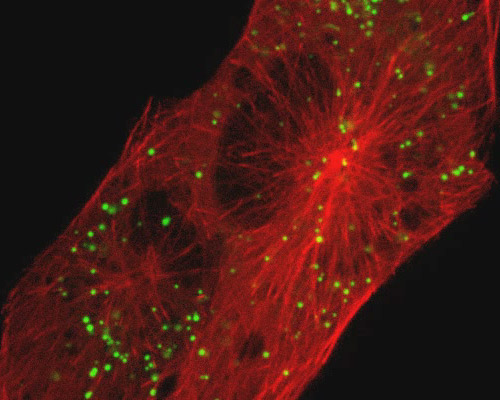Monkey Kidney Cells with mEmerald-PMP and mApple-EB3

Mammalian cells possess three family members - EB1, EB2, and EB3 - that share a conserved domain structure and display high sequence similarity. The family of end-binding proteins has been established to particularly associate with the ends of growing microtubules in several different cell types. It is believed that these proteins regulate microtubule dynamics as well as the binding of microtubules to organelles, membrane sections, and other protein complexes. The digital video sequence in this section explores the dynamics of growing microtubules in African green monkey kidney epithelial cells (BS-C-1 line) and the relationship between peroxisomes and microtubules. EB3 was visualized with mApple and peroxisomes were targeted with a chimera of mEmerald fused to a peroxisomal membrane protein targeting signal in the digital video sequence in this section.
mApple is a bright, photostable red fluorescent protein that matures rapidly. The excitation and emission of mApple peak at 568 and 592 nanometers, respectively. The green fluorescent protein employed to tag peroxisomes, mEmerald, exhibits peak excitation at 487 nanometers and peak emission at 509 nanometers.



